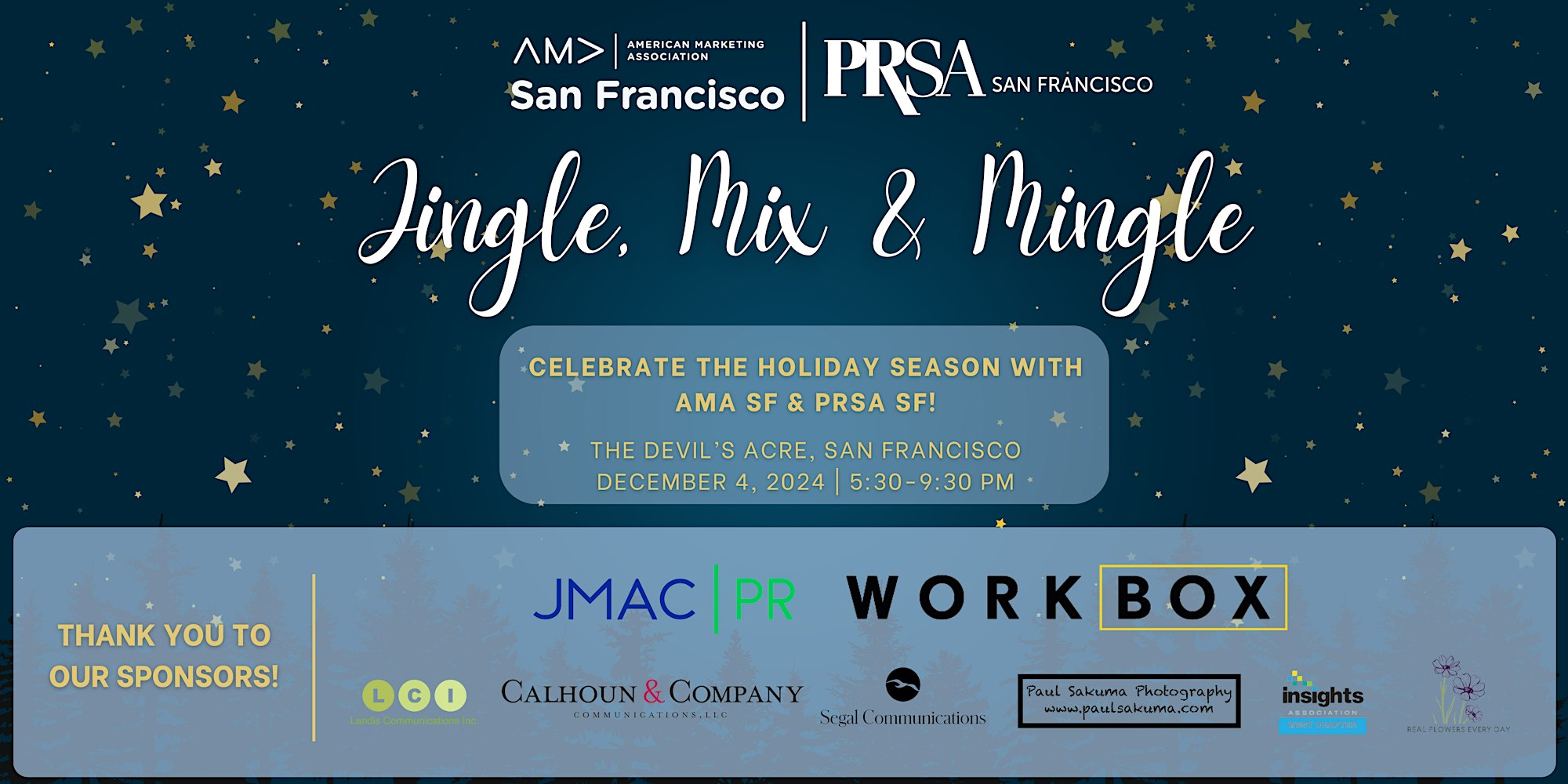Here in San Francisco, we’re lucky to be a short drive away from Napa Valley, one of the most robust areas for wine production in the world. With that designation comes no shortage of wineries showcasing their products to an eager market — and marketers competing for those palates. How can they create impactful campaigns that resonate with their target audience, and most importantly, bring vino-lovers back to their winery?
Experts like AMA-SF member Phoebe Ullberg, Director of Marketing for Napa-based winery Domaine Carneros, bring unique insight, fresh ideas, and budget-conscious creativity to the wine industry. In this installation of AMA-San Francisco’s Fireside Chat series, AMA-SF president & VP of technology Eric Weidner interviews Ullberg about her background and the marketing strategies she uses every day at her winery.
Read the summary and watch the video below for an intriguing conversation that covers everything from practical tips for wine marketers to career advice for anyone considering entering this lucrative — and delicious — market.
How Phoebe Ullberg became a sparkling wine marketer
Ullberg didn’t start her career with her eyes on the food and beverage industry. She went to undergraduate school for psychology but made her way into restaurant ownership upon graduation. That time spent in restaurant ownership sparked a love of wine and inspired Ullberg to return to graduate school in hospitality.
“Over time, I have taken these different passions that I have and realized that they fit perfectly into a marketing career,” Ullberg said. “After I finished graduate school… I packed up and headed out to Napa because I knew that wine was my passion.”
Her foray into wine began with a small family winery, where she immersed herself in all things connected to producing and selling all kinds of wine. This exposure helped her gain a new understanding of — and appreciation for — what customers are looking for when shopping for themselves or their loved ones.
“I really loved the side that spoke to people about wine, that helped people on their wine journey and helped them find exactly the wine that they wanted,” Ullberg said. “Over time, it evolved into this career in marketing that I have today.”
Although she may not have attended a formal marketing program in school, Ullberg credits her liberal arts degree and her life experience with providing a fresh perspective on sparkling wine marketing.
“I am very, very glad for my background because I wasn’t looking at everything through the frame of marketing — I was looking at it through the frame of loving wine,” Ullberg said.
A behind-the-scenes look into marketing sparkling wine
Prioritizing the needs of multiple distribution channels
Wineries like Domaine Carneros have many ways of getting their products into consumers’ hands. As she builds her marketing strategy, Ullberg said it takes a lot of coordination to ensure that there’s enough sparkling wine to go around between hospitality, restaurants, retail outlets, and direct-to-consumer (D2C) selling avenues like e-commerce, the winery’s club, and sales at the winery itself.
“We have a lot of different channels that we’re working with… [and] a big part of my marketing consideration is… how we’re allocating product to the different channels to satisfy everybody and to make good margins,” Ullberg explained. “We have to make sure we have enough inventory for everybody.”
Working with a tight budget — and how that shapes marketing strategies
Ullberg said that it’s “absolutely true” that you won’t find big marketing budgets at wineries, which means she and other wine marketers get creative with the resources they have on hand. Referral marketing is one such resource, leaning into the enthusiasts who love Domaine Carneros to bring others into the fold through their love of the brand.
“We see in the data that wine club members who were referred by a fellow wine club member retain longer, so I really rely on the enthusiasm of my existing customers to spread the word and gain me new customers,” Ullberg said.
The reliance on referral marketing emphasizes the importance of the winery’s robust wine club, one of the biggest and most lucrative marketing channels Ullberg manages.
“Our wine club has been around for 25 years, and we have members that have been in it for that entire time who are still some of our most loyal members,” Ullberg said, underscoring the wine club’s powerful role in creating return customers.
Tapping into customer data
The winery’s visitor center is an overflowing source of data for Ullberg, which she utilizes to inform her retail and digital marketing programs.
“I have a wealth of information at my fingertips because of our visitor center,” Ullberg said. “I can see age ranges, I can see different economic statuses… and I definitely lean into that and understand who my consumer is and what their desires are.”
Ullberg harnesses this information to create programming designed to convert curious learners into wine enthusiasts who are likely to return to the tasting room or sign up for the wine club. One such program, Bubbles and Bites, is designed to expose visitors to the idea that food and wine can be paired together in artful and delightful ways.
“I can then pick up the conversation with those people in my additional marketing materials,” Ullberg said, providing an example of recipe and wine pairing sharing sent in a follow-up email to event attendees. “It’s an ongoing conversation about the versatility of sparkling wine.”
Establishing ways to create return customers
Throughout the fireside chat, Ullberg emphasized her focus on creating return customers as a reliable revenue stream for Domaine Carneros.
“Wineries can rely upon regular revenue from their wine club members as well, so the wine club is a very important and lasting source year upon year,” Ullberg said.
The tasting room, located in Napa, is central to these efforts. Not all visitors are inclined to join the wine club, but Ullberg does not miss any opportunity to entice customers to come back and taste something new, come to an event, or stroll the winery’s grounds.
“We’re fortunate to have a popular tasting room… [and] I have to take those customers who are new to the brand and convert them into regular customers,” Ullberg said. “For those that don’t want to join the wine club, I need to continue the conversation. I’ll use traditional marketing channels to do that, through email marketing, digital advertising, and social media.”
Learn more from Phoebe Ullberg and AMA-San Francisco
Phoebe Ullberg’s expertise is among the many experienced and knowledgeable marketers that make up the American Marketing Association-San Francisco chapter. We are pleased to highlight a new marketer in every episode, each one bringing new insights and advice to our members and the greater Bay Area marketing community. Subscribe to the AMA-SF YouTube channel to catch each Fireside Chat.





Comments are closed.